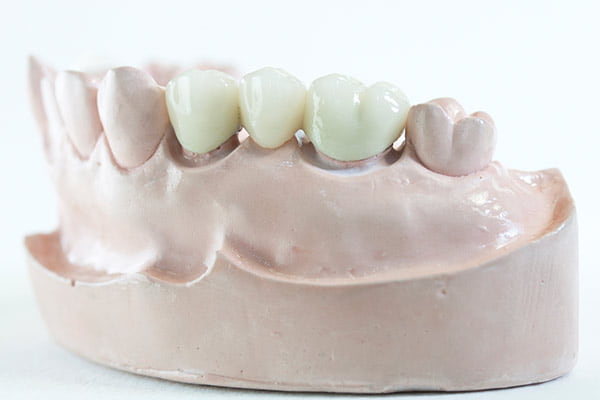Are you bothered by a gap between your teeth? Has an injury or severe tooth decay caused major damage to one or more of your teeth? Well, if the answer is yes, then you might like to consider the option of getting a ‘bridge’.
A dental bridge offers the ideal solution for those who have missing teeth. These false teeth are designed for filling up the spaces left behind by one or more missing teeth. A dental bridge is typically composed of two (or more) teeth crowns placed on both sides of the identified gap. The term ‘abutment teeth’ is used to refer to these anchoring teeth and between these support teeth is a fake tooth (or teeth). The false teeth may be called ‘pontics’. These are typically made of alloys, porcelain, gold or a mix of these different materials. Implants or natural teeth help in supporting dental bridges.
A detailed initial consultation with the dental professionals at the Smile Dental Practice will help in determining the type of dental bridge that’s most suitable for your individual case.

Traditional Dental Bridges
A Traditional Dental Bridge is anchored by a set of crowns on both sides. The crowns are usually placed over the adjacent teeth of the patient. In order to execute this restoration we will first reshape the adjacent teeth and create space for the dental bridge.
Resin Bonded Bridges
A Resin Bonded Dental Bridge is typically recommended for gaps in the front set of teeth. In this particular method, the false tooth is first joined to strong metal bands. These metal bands are connected to the anchoring teeth with the help of a concealed resin. It is important for the anchoring teeth to be healthy so that the resin dental bridge is fully effective. The teeth usually do not require too much preparation in a resin-bonded bridge.
Cantilever Bridges
A Cantilever Bridge is utilized when adjoining teeth are present on just a single side of your missing tooth/teeth. It is mentioned here that this type of bridge is not commonly used anymore. Also, it isn’t ideal for placement in the rear of your mouth as it can place excessive pressure on the remaining teeth and cause damage
Maryland Bridges
A Maryland Bridge is a safe alternative to a traditional bridge. This type of bridge comes with a pontic (false tooth) which is held steady by a porcelain or metal structure. The structure gets bonded to the backside of the adjacent teeth, next to your missing tooth. The adjoining teeth do not require filling since the bridge is not held in position by crowns.
Implant Bridges
An Implant-Supported Dental Bridge may also be used to replace missing teeth. This is a good treatment option when a patient has more than a single missing tooth. These bridges aren’t supported by either frameworks or crowns, rather dental implants are used for keeping them in place. Typically, a single implant is used for each missing tooth.

Here are some of the key benefits of getting dental bridges:
At the initial consultation, we will determine if a dental bridge should be the chosen restorative treatment for your missing tooth/teeth. We will carry out a detailed examination and might also request x-rays in order to get a complete diagnosis.
Here are some of the reasons why you might consider getting dental bridges:

The procedure for placing the bridge in the mouth is quite straightforward. Prior to the procedure, we will use a numbing agent so that you do not experience any pain or discomfort during the treatment. When you feel numb, we will begin the procedure. Getting a traditional dental bridge usually takes at least two visits to the dentist, each lasting about an hour to an hour and a half. The average lifespan of a bridge is 10-15 years for conventional bridges and 7-10 years for resin bonded bridges.
Are you ready to get a smile makeover? Visit Smile Dental Practice in Glendale and learn more about dental bridges and other tooth restoration procedures. Call us to schedule an appointment or fill out our contact form and we will get in touch with you shortly.
We’re here to help our patients achieve their dental goals and dream smile. Contact our office today to schedule your next dental visit at our Glendale Dentist office.
SCHEDULE AN APPOINTMENT TODAY AT DENTAL OFFICE IN GLENDALE
Getting your dream smile is easier than you think.
At Smile Dental Practice we welcome you on the journey towards a complete transformation of your smile! Please contact us if you have any questions or to schedule a consultation.

Accessibility Menu
based on 100 reviews
based on 1 reviews
based on 40 reviews
based on 1 reviews
based on 5 reviews
based on 100 reviews
based on 1 reviews
based on 40 reviews
based on 1 reviews
based on 5 reviews